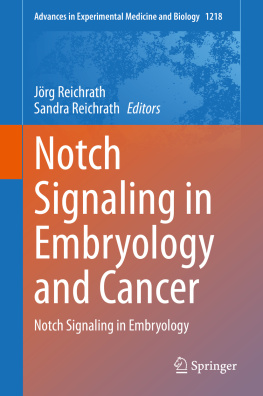W. B. Saunders Company. - Essentials of Domestic Animal Embryology E-Book
Here you can read online W. B. Saunders Company. - Essentials of Domestic Animal Embryology E-Book full text of the book (entire story) in english for free. Download pdf and epub, get meaning, cover and reviews about this ebook. City: Edinburgh etc, year: 2016;2010, publisher: Elsevier Health Sciences;Saunders Elsevier, genre: Romance novel. Description of the work, (preface) as well as reviews are available. Best literature library LitArk.com created for fans of good reading and offers a wide selection of genres:
Romance novel
Science fiction
Adventure
Detective
Science
History
Home and family
Prose
Art
Politics
Computer
Non-fiction
Religion
Business
Children
Humor
Choose a favorite category and find really read worthwhile books. Enjoy immersion in the world of imagination, feel the emotions of the characters or learn something new for yourself, make an fascinating discovery.

- Book:Essentials of Domestic Animal Embryology E-Book
- Author:
- Publisher:Elsevier Health Sciences;Saunders Elsevier
- Genre:
- Year:2016;2010
- City:Edinburgh etc
- Rating:3 / 5
- Favourites:Add to favourites
- Your mark:
- 60
- 1
- 2
- 3
- 4
- 5
Essentials of Domestic Animal Embryology E-Book: summary, description and annotation
We offer to read an annotation, description, summary or preface (depends on what the author of the book "Essentials of Domestic Animal Embryology E-Book" wrote himself). If you haven't found the necessary information about the book — write in the comments, we will try to find it.
Essentials of Domestic Animal Embryology E-Book — read online for free the complete book (whole text) full work
Below is the text of the book, divided by pages. System saving the place of the last page read, allows you to conveniently read the book "Essentials of Domestic Animal Embryology E-Book" online for free, without having to search again every time where you left off. Put a bookmark, and you can go to the page where you finished reading at any time.
Font size:
Interval:
Bookmark:
ESSENTIALS OF DOMESTIC ANIMAL EMBRYOLOGY
First Edition
By
Poul Hyttel
University of Copenhagen, Denmark
Fred Sinowatz
LMU Munich, Germany
Morten Vejlsted
University of Copenhagen, Denmark
With the Editorial Assistance of
Keith Betteridge
Ontario Veterinary College, University of Guelph, Canada
Foreword by
Eric W. Overstrm, Ph.D.
Professor and Head, Department of Biology & Biotechnology, Director, Life Sciences & Bioengineering Center, Worcester Polytechnic Institute, Worcester, Massachusetts
Saunders Ltd.
COPYRIGHT
SAUNDERS ELSEVIER
First published 2010, Elsevier Limited. All rights reserved.
.
ISBN 978-0-7020-2899-1
British Library Cataloguing in Publication Data
A catalogue record for this book is available from the British Library
Library of Congress Cataloging in Publication Data
A catalog record for this book is available from the Library of Congress
Notice
Neither the Publisher nor the Editors assume any responsibility for any loss or injury and/or damage to persons or property arising out of or related to any use of the material contained in this book. It is the responsibility of the treating practitioner, relying on independent expertise and knowledge of the patient, to determine the best treatment and method of application for the patient.
The Publisher
Printed in China
Commissioning Editor: Robert Edwards, Joyce Rodenhuis
Development Editor: Nicola Lally
Project Manager: Nancy Arnott
Designer/Design direction: Charles Gray
Illustration Manager: Merlyn Harvey
Illustrator: Oxford Illustrators
CONTRIBUTORS
Several highly qualified scientists have demonstrated their willingness to contribute to the book project.
Keith J. Betteridge, BVSc MVSc PhD FRCVS , University Professor Emeritus
Department of Biomedical Sciences
Ontario Veterinary College
University of Guelph, Ontario
Canada
Gry Boe-Hansen, DVM Phd , Lecturer
School of Veterinary Science
University of Queensland, Australia
Henrik Callesen, DVM PhD DVSc , Research Professor
Department of Genetics and Biotechnology
Faculty of Agricultural Sciences, Aarhus University,
Denmark
Ernst-Martin Fchtbauer, PhD Dr.habil , Associate Professor
Department of Molecular Biology
Aarhus University
Denmark
Vanessa Hall, PhD , Post Doc
Department of Basic Animal and Veterinary Sciences
Faculty of Life Sciences, University of Copenhagen
Denmark
Poul Hyttel, DVM Phd DVSc , Professor
Department of Basic Animal and Veterinary Sciences
Faculty of Life Sciences, University of Copenhagen
Denmark
Palle Serup, Phd , Director of Research
Department of Developmental Biology
Hagedorn Research Institute
Denmark
Fred Sinowatz, Dr.med vet. Dr.med Dr.habil , Professor
Institute of Veterinary Anatomy, Histology and Embryology
LMU Munich,
Germany
Gbor Vajta, MD PhD DVSc , Scientific Director
Cairns Fertility Centre
Australia
Adjunct Professor, University of Copenhagen, Denmark
Adjunct Professor, James Cook University, Australia
Morten Vejlsted, DVM Phd , Assistant Professor
Department of Large Animal Sciences
Faculty of Life Sciences, University of Copenhagen,
Denmark
PREFACE
For me, some of the most exciting and glorious moments in teaching gross anatomy of the domestic animals have occurred during days shared with open-minded students surrounded by steel tables full of pregnant uteri and fetuses in the dissection room. To examine those fetal specimens is to open an anatomy book; a book in which each organ and structure is perfectly defined and its developmental history is perfectly retained truly the optimal situation for memorable anatomical Aha-Erlebnishen for students and teachers alike!
Embryology has always been a prerequisite for a real understanding of gross anatomy and of the teratology that results from development going awry. Today, however, it is that and much more besides; contemporary biomedical research requires embryology (or, rather, developmental biology) to play a central role in its progress a role with important societal implications. Assisted reproduction technologies, for example, are as much applied to domestic animals as to humans in which vitro fertilization has become a common step ex soma to bridge one generation of mankind to the next. In the domestic animals, techniques such as cloning by somatic cell nuclear transfer have made possible genetic modifications that offer the prospects of modifying animals so that they produce valuable proteins, serve as models of human diseases, or provide organs for xenotransplantation in the future. All of these prospects depend upon a thorough knowledge of embryology and many of them are contentious. They put the discipline in an ethical spotlight that, in my view, obliges contemporary embryologists to participate in scientifically based societal debates.
For a while, ever more sophisticated assisted reproduction technologies moved the cutting edge of embryological research out of the body and into the in-vitro environment. However, the expansion of this field to encompass embryonic stem cells has refocused us on the embryo per se; the control of stem cell differentiation in vitro will depend absolutely on fundamental knowledge of the molecular regulation of developmental processes in vivo. The embryo itself has become the key to success the circle is closed!
Cutting edges are these days fashioned from an amalgam of conventional embryology, genomics, transcriptomics and epigenomics applied to the investigation of the molecular mechanisms of developmental biology. Information is growing exponentially, and to combine in-depth molecular understanding with overall holistic embryology is a challenge a challenge that becomes crystal clear when writing a textbook on the essentials of domestic animal embryology! For years, teaching the subject has been hampered by the lack of such a textbook and medical embryology textbooks were used as a poor compromise. By 2006, when McGaedy et al published their welcome textbook on veterinary embryology, we had already embarked on the present book with the goal of making our own research material, collected over several decades, palatable and stimulating for students. Working towards this goal has been a great experience for us and we hope that you the reader will find that we have accomplished at least part of what we intended. Future improvements, of course, will depend largely on feedback and I would much appreciate receiving constructive criticism.
In the meantime, it is my sincere wish that reading this book may lead you into at least one Aha-Erlebnis in the wondrous world of embryology!
Poul Hyttel, Vidiekjaer, Valby Denmark
June 3, 2009

My painting (2003) of the open horizon of Skagen, Denmark, where I grew up and was imprinted. I see embryology in the same light: a vista with infinite potentials that are just waiting to be realized.
FOREWORD
Over the last 20 years, modern life science research efforts have rapidly advanced our knowledge of the normal and abnormal processes of domestic animal development. As our depth of understanding of the cellular and molecular mechanisms has grown, so too has the recognition of the potential for, and successful application of, this knowledge to enhance animal-based food and fiber production. It is during embryo and fetal development, from the formation of competent gametes to parturition, that powerful advancements in molecular genetic manipulation and assisted reproductive technologies are employed, and these efforts have had profound impact on animal production worldwide. As a result of these advances, there remains an unmet need for a contemporaneous text of domestic animal development to support education and training of todays veterinarians, animal scientists and developmental biologists.
Next pageFont size:
Interval:
Bookmark:
Similar books «Essentials of Domestic Animal Embryology E-Book»
Look at similar books to Essentials of Domestic Animal Embryology E-Book. We have selected literature similar in name and meaning in the hope of providing readers with more options to find new, interesting, not yet read works.
Discussion, reviews of the book Essentials of Domestic Animal Embryology E-Book and just readers' own opinions. Leave your comments, write what you think about the work, its meaning or the main characters. Specify what exactly you liked and what you didn't like, and why you think so.







